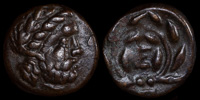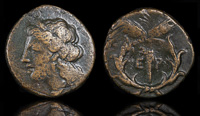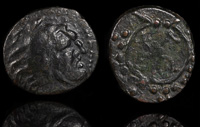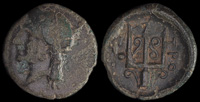Argolis
The hill fort of Tiryns reaches its height of importance.
The palace at Tiryns is destroyed, but the city continues to grow.
Sybaris is founded by settlers from Troizen.
Argos defeats Sparta at the Battle of Hysiae.
Nemean Games are established at Nemea in honor of Zeus, in the territory of Kleonai.
Argos does not participate in the Greek alliance against the Persian invasion, resulting in diplomatic isolation.
August 7
A notable reorganization of the Nemean Games, held in the territory of Kleonai, occurred following the Persian Wars.
July
Sparta and their allies, including Sikyon and Tegea, defeat Athens and their allies at the Battle of Nemea. On Athens side are Thebes, Lokris Opuntii, and Corinth. With Sparta are Halieis, Sikyon, Epidauros, Troizen, and Hermione. Phlious remains neutral. Pellene fights on the side of Sparta against Thespiai.
The Tholos, a circular building in the sanctuary of Asklepios in Epidauros, is built under the architect Polykleitos the Younger.
The Theatre of Epidauros, also designed by Polykleitos the Younger, is constructed.
Artaxerxes III Okhos finally succeeds in re-conquering Egypt under Nektanebo II, with the help of mercenaries from Argos, Thebes, and Mentor of Rhodes.
326 BCE
Demetrios Poliorketes seizes Epidauros, Sikyon, Corinth, Bura, Argos, and Orchomenos.
Pleistarchos is expelled from Argos.
Pyrrhos of Epiros attacks Argos, which is helped by Antigonos II, and is killed there when an old woman throws a brick on him.
Antigonos II installs the tryant Aristippos the Elder at Argos.
Epidauros suffers in the wake of the Kleomenean War, but the sanctuary and city are quickly restored.
Hermione ruled by tyrant named Xenon.
Aratos of Sikyon takes the Acrocorinth and frees Argos. Xenon steps down in Hermione.
The Spartans under King Kleomenes III defeat the Achaian League under Aratos of Sikyon (and including Argos and Megalopolis) in the Battle of Dyme.
The Sanctuary to Asklepios at Epidauros is looted by Sulla.
Julius Caesar, during his campaigns in Greece, visits the sanctuary of Asklepios at Epidauros.
The sanctuary to Asklepios in Epidauros‘ infrastructure is upgraded with new Roman baths and improved facilities for visitors.
Emperor Caligula visits Greece and shows interest in the Greek sanctuaries, including that of Asklepios at Epidauros.
Approximate end of the Nemean Games (held in the territory of Kleonai) during the Roman Empire era as interest in Greek athletic competitions waned.
April 6
The author of this page wakes up early and tours Epidauros before the busses arrive.
April 6
The author of this page visits Tiryns.





